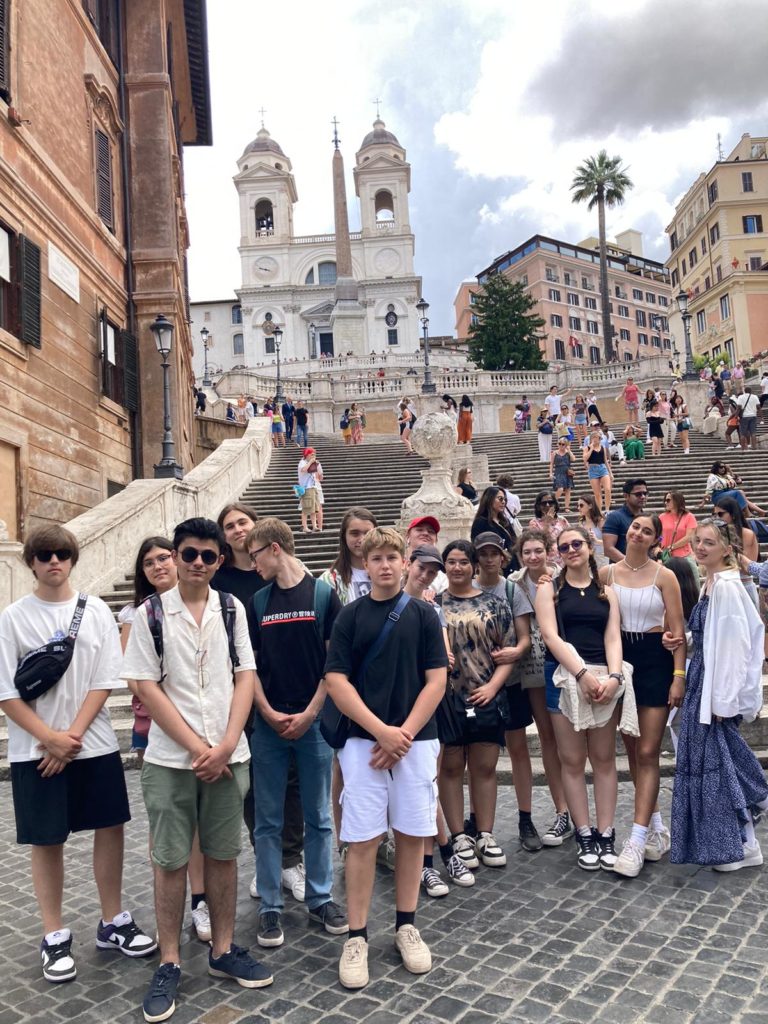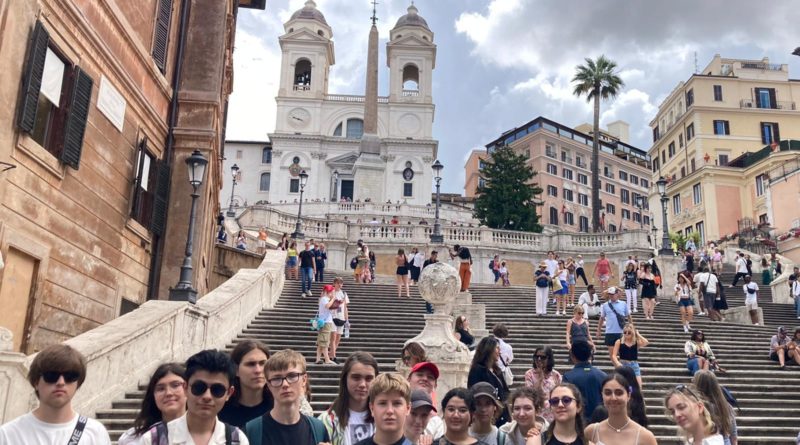Rome Trip: Spanish Steps
During our visit to Rome students became tour guides. Each student had to introduce a certain monument to others, focusing on these three areas:
– history of the monument
– how is that monument relevant for us today (Did it influence current culture, language, architecture?)
– a fun fact or an interesting story
In this blog post we share ROUZHIN’s take on Piazza Navona:
– History of the monument
The Spanish Steps is a staircase designed in 1723 by Francesco De Sanctis, and funded by a French diplomat Stefano Gueffier. It was built in order to link the Bourbon Spanish Embassy, and the Trinità dei Monti church, both located above the Holy See and Spanish Square below.
– How is that monument relevant for us today (Did it influence current culture, language, architecture?)
The Spanish Steps are relevant today for their cultural and architectural influence. They attract tourists, appear in films, inspire staircase designs worldwide, and serve as vibrant public gathering spaces. They symbolize beauty and romance in literature and conversation, maintaining their impact on modern culture and urban life.
– Fun fact
A fun fact about the Spanish Steps is that they were a popular meeting spot for artists and writers in the 19th century. English poet John Keats lived and died in a house next to the steps, which is now a museum in his honor. This vibrant, artistic atmosphere has made the steps a symbol of creativity and inspiration.
Resources:
https://www.britannica.com/place/Spanish-Steps





